Kameda Shuzo: A 260-Year Old Brewery Producing Sacred Sake (Part 1)

Founded by a Buddhist mountain priest 266 years ago, Kameda Sake Brewery continues its tradition of making sake for the Shinto ceremonies held at Meiji Shrine while diversifying into new fields of liquor production.
In a rural area of Chiba’s southern Boso Peninsula there is a small sakagura (sake brewery) named Kameda Shuzo, which has been producing its homegrown brand of “jizake” for over 266 years.
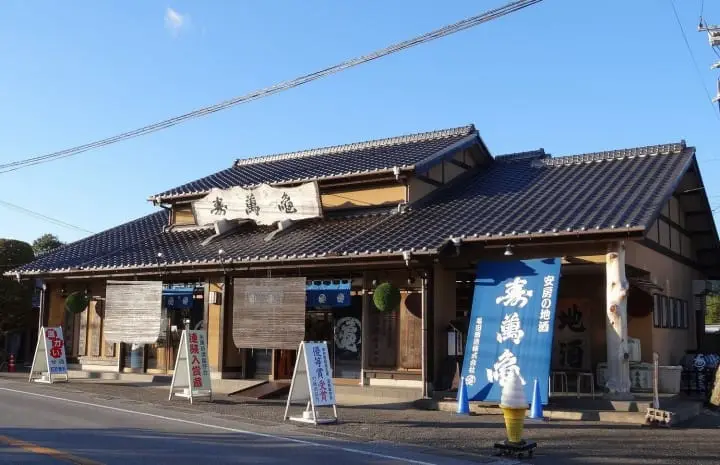
Kameda Shuzo Co. Ltd. in Kamogawa, Chiba Prefecture
Jizake literally means "regional or local sake", and is sake brewed by independent sakagura located in the rural countryside of Japan using local rice and water. It’s not brewed through mass production techniques, but using age-old traditional methods under the watchful eye of the sakagura’s brewmaster or Toji.
Jizake brands are extremely popular due to their unique taste, hues and bouquet. It should be pointed out that the Japanese do not commonly use the word "sake" but “Nihonshu” to refer to the liquor distilled from rice.

Mr. Yuji Kameda (right), the 9th generation president of Kameda Shuzo Co. Ltd
President Kameda stated that the number of sakagura and sake production itself peaked in 1978 and that at the moment about 80 percent of the sake producers are having difficulties staying in business. He noted that there used to be nine sakagura in the Kamogawa area and Kameda is now the only sakagura remaining. The “shochu boom” that started in the 1980’s has drawn away sake drinkers with its less expensive prices. Currently, there are about 1,400 sakagura in Japan and about twenty large-scale, mass production sake companies. Most of the sakagura produce from 200 to 1,000 kiloliters annually.
History of Kameda Sake
Kameda, a small family business and now managed by the 9th generation president, Yuji Kameda (60), besides producing a wide variety of national and international award winning jizake, it also produces shochu (distilled from grains or vegetables) and other liqueurs. However, Kameda brewery also continues to play an important role in producing a special sake used in Shinto ceremonies called “oshiroki” for Meiji Shrine in Tokyo. Over the years it also provided sake for Imperial ceremonies such as Daijosai (*1).
*1... Daijosai, literally “Great Thanksgiving Festival,” is one of the first Shinto rituals held upon the enthronement of the new Emperor. For the Daijosai, two special rice paddies are chosen and purified by elaborate Shinto rituals. The families of the farmers who are to cultivate the rice in these paddies must be in perfect health. The rice is grown, harvested, and stored in a special Shinto shrine as the embodiment of a kami or divine force. Some of this “divine” rice is used to brew sacred sake or oshiroki.
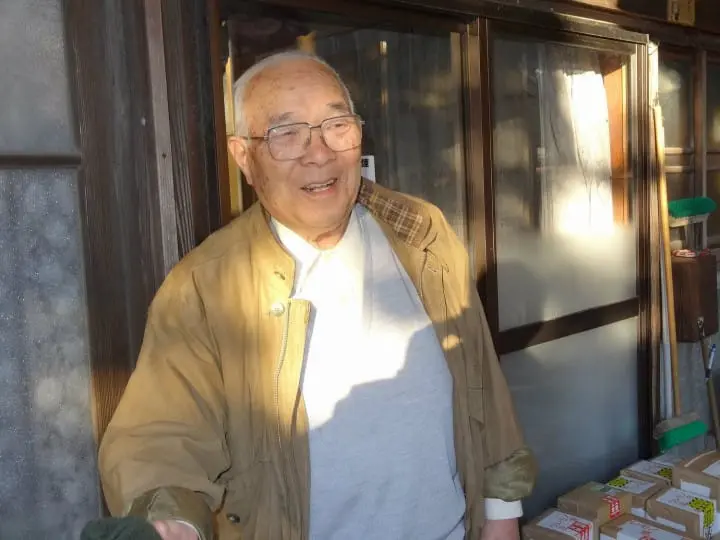
Kameda Shuzo Chairman, Mr. Yoshi Kameda (8th generation), still actively involved in the operations at 91 years of age
Kameda’s historical roots date back to 1751, when a Buddhist mountain priest (yamabushi) named Yukan Takijoin brewed “nigorizake” (*2) as a religious offering. The second and third generations were priests, Eisen Myorakuin and Eiko Myorakuin. The Kameda family became the 4th generation to operate the brewery. For generations after that, Kameda has continued to brew ritual sake and is the one and only licensed supplier of sacred oshiroki sake to the Meiji Shrine in Tokyo.
*2... "Nigorizake" translates roughly "cloudy or murky sake". Unlike other sake varieties, it is not filtered to remove impurities or grain solids resulting from fermentation and has a milky, cloudy appearance.
Producing Sacred Sake for Shinto Rituals

Taruzake (sake barrels) of oshiroki placed on the Shinto altar (kamidana) within Kameda’s brewery.
In 1871, Kameda was selected to produce the sacred sake “oshiroki” for the Daijosai ritual and continues to this day to be the sole purveyor of oshiroki to Meiji Shrine. The traditional Shinto ritual Daijosai was being performed upon the accession to the throne of Emperor Meiji.
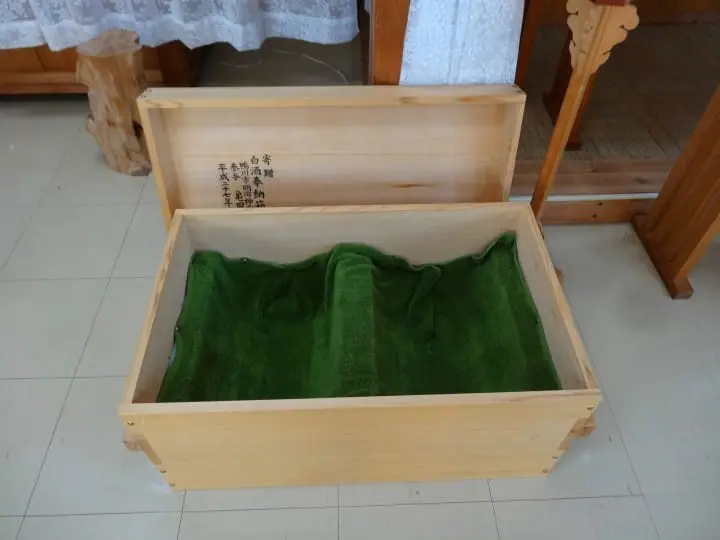
Special wooden box for shipping the sacred sake to Meiji Shrine.
Rice used for this festival must be produced based on strict Shinto and Imperial Household rules and rice fields are selected through ritual divination. For the 1871 Daijosai, rice fields in the Kitakomachi village of Kamogawa, Chiba prefecture, were selected and designated as “suki-saiden” or sacred rice fields for the production of rice to be offered during the Daijosai festival. Kameda used rice from these fields to produce “oshiroki”.
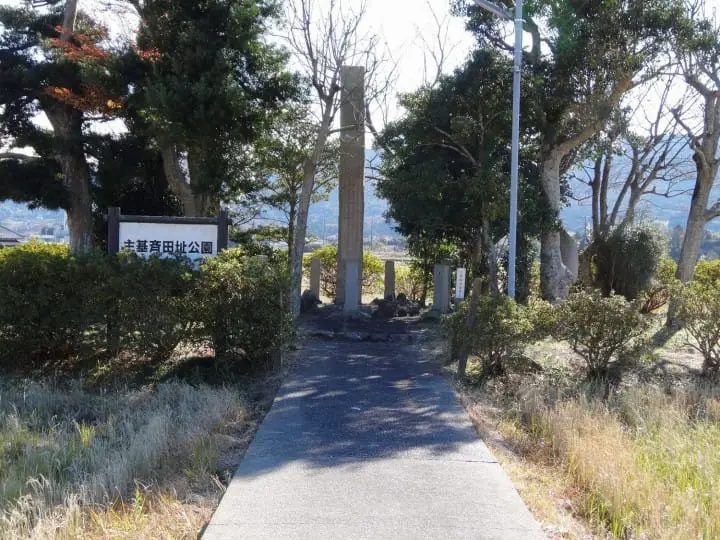
Entrance to the small park commemorating the suki-saiden rice fields
These sacred fields are still used and are part of the Suki-saiden Public Park, located about a 10 minute drive along Prefectural Road 34 west of Kamogawa, not far from Kameda Shuzo. Monuments mark the location as suki-saiden fields and also as one of the "100 famous rice fields of Japan".
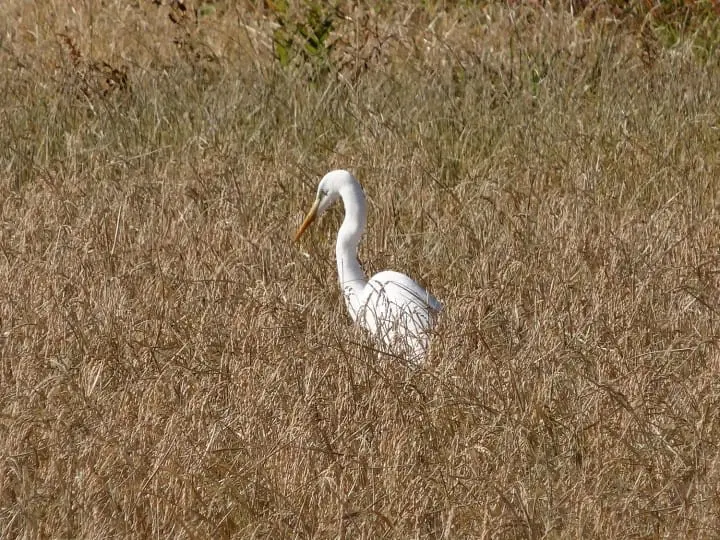
Japanese white crane feeding in the suki-saiden fields.
In 1981, on the occasion of the Grand Festival of Meiji Shrine, the Kamogawa Society for the Veneration of Meiji Shrine was founded emphasizing the need to both preserve and convey on to the future generations the dignity of the “suki-saiden” rice fields of Kamogawa. The suki-saiden fields, located near Kameda, remain as the symbol of a precious historical legacy of sake brewing in the Kamogawa region.
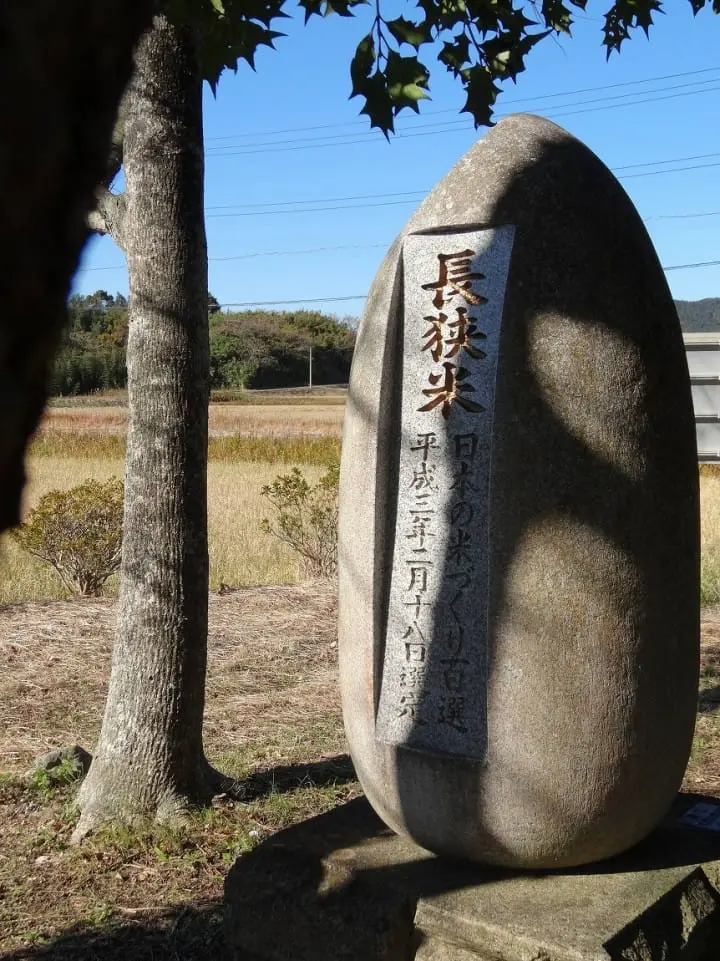
Stone monument in the shape of a rice kernel designating the suki-saiden fields as one of the "100 famous rice fields of Japan".
In addition to the suki-saiden fields, sacred fields near Kofu, Yamanashi Prefecture, were designated as “yuki-saiden” which produce a sacred sake called “okuroki”.
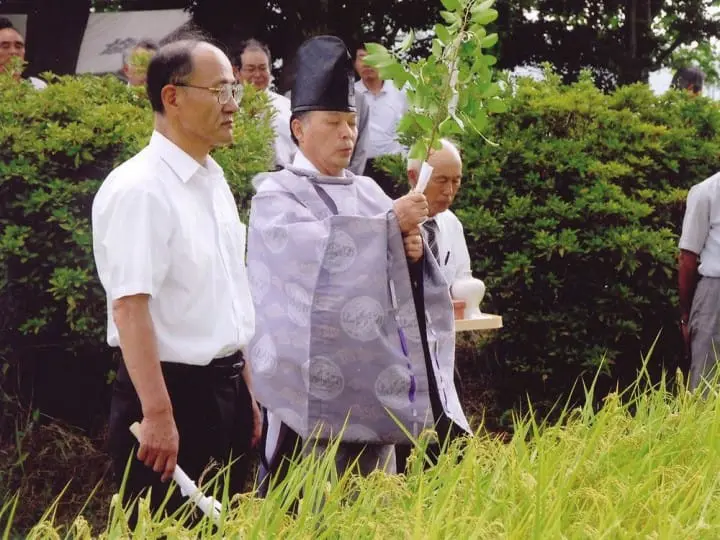
The Shinto ritual of “Hosai” (rice harvest festival) held at the suki-saiden fields. (Photo courtesy of the Kameda Shuzo Co. Ltd.)
On November 23rd of each year the Niname ceremony is held at Meiji Shrine to thank the gods for an abundant harvest. For this ceremony, Kameda produces the sacred sake ("omiki" or "shinshu") from the newly harvested rice of the suki-saiden fields located west of Kamogawa city. During the harvest of these fields, special Shinto rituals are conducted to bless the harvested rice.
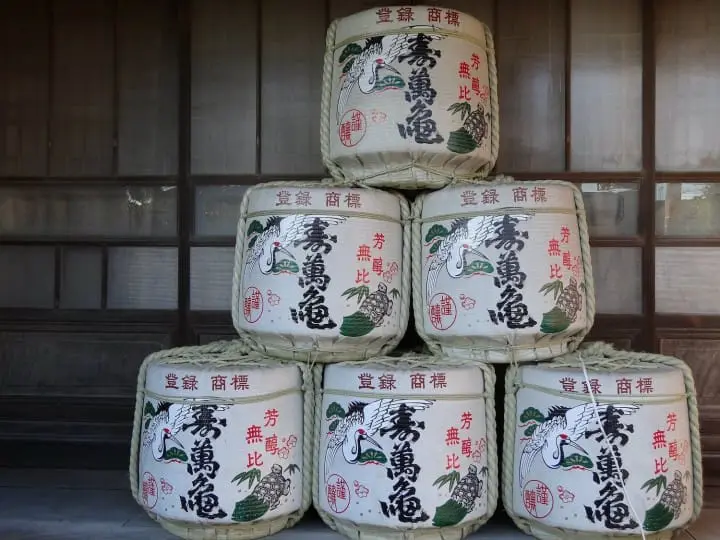
"Taruzake" or sake stored in wooden barrels has a woody tang and is used special ceremonies.
Kameda, in addition to providing sacred sake for various Imperial family events, also had the distinction of supplying its “omiki” or “shinshu” sake for the wedding of the famous Sumo Grand Champion (Yokozuna) Takanohana, and “furumaizake” (sake created for special occasions) for Imperial family events such as the birthday celebration of Princess Aiko, the daughter of the Crown Prince and Princess.
Visit the Brewery and Taste Kameda Sake!
Hopefully, the fascinating history of Kameda brewery has piqued your interest in their sake brands. Learn more about Kameda sake by reading the second part of our article on Kameda brewery: Kameda Sake Brewery - Diversifying For The Future (Part 2).








































![[Just a short distance from Nagoya] Popular Taiwanese YouTuber Alan tours Aichi, Tokoname!](https://resources.matcha-jp.com/resize/720x2000/2026/01/08-255181.webp)

